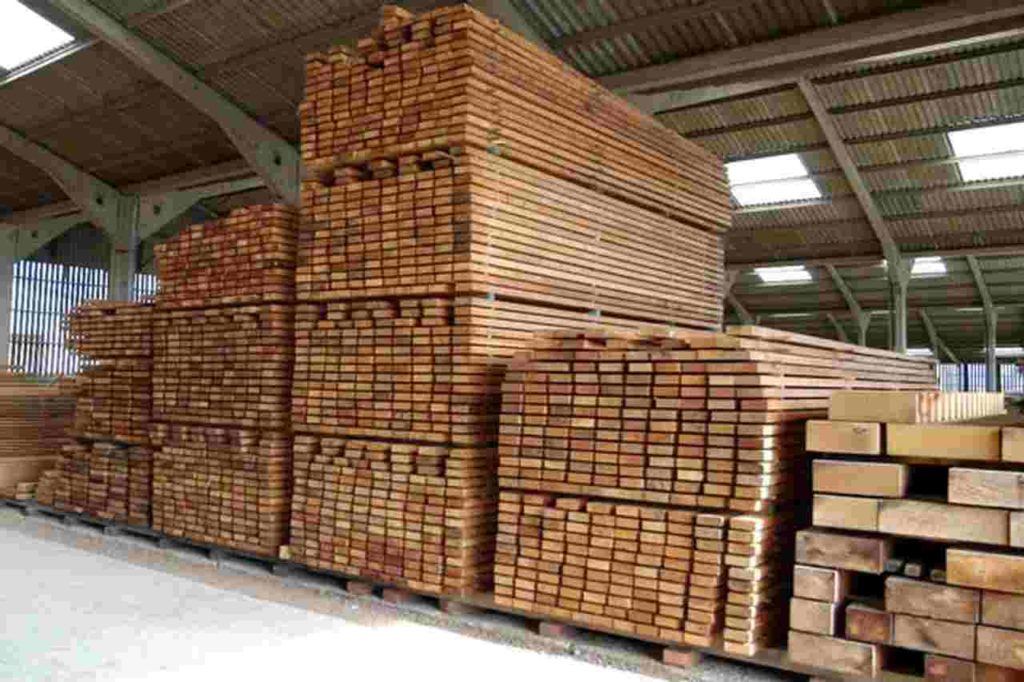Topic Content:
- Natural Seasoning or Air Seasoning
- Artificial Seasoning or Kiln Seasoning
- Reasons for Wood Seasoning
- Calculating Moisture Content

What is Wood Seasoning?
The process of reducing the moisture or water content of wood is called wood seasoning.
Timber, which has just been converted, is called fresh or green timber. Green timber contains a lot of water and is not suitable for engineering, or furniture work.
Since sawn timber contains some amount of water, it must be seasoned before use.
There are two methods of seasoning:
- Natural or Air Seasoning
- Artificial or Kiln Drying
1. Natural Seasoning or Air Seasoning:
This method of seasoning involves stacking the converted timber planks in the open air, for a period of time, and allowing them to dry naturally. They are usually done in a roofed building to keep off the rain. This method requires little attention and is relatively cheap. A disadvantage, though, is that it takes a long time to dry.

You are viewing an excerpt of this Topic. Subscribe Now to get Full Access to ALL this Subject's Topics and Quizzes for this Term!
Click on the button "Subscribe Now" below for Full Access!
Subscribe Now
Note: If you have Already Subscribed and you are seeing this message, it means you are logged out. Please Log In using the Login Button Below to Carry on Studying!



Very nice bravo 👏
VERY HELPFULL AND EDUCATING.
THANKS.